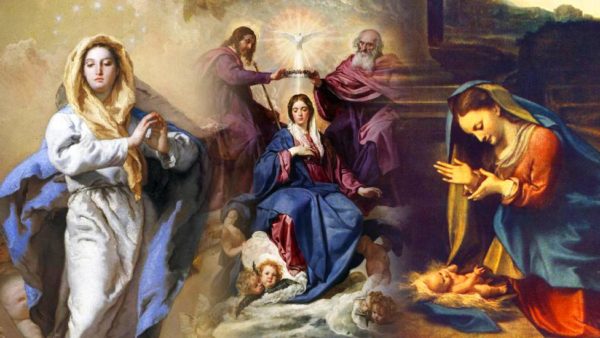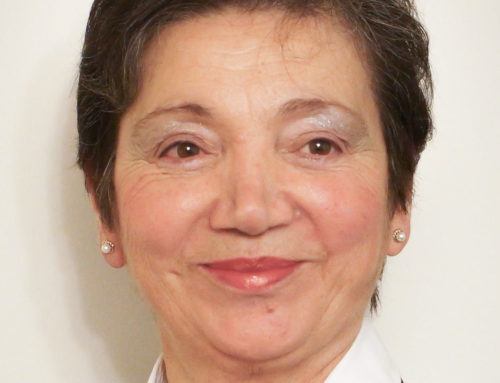Introduction
Mary, in her own quiet and loving way, was with Jesus from the beginning of his earthly life to its end. My mother and my brethren are those who hear the word of God and do it, he said (Lk 8:21). The Catholic faith believes the mother of Jesus, after her Son, is humanity at its best. The doctrine of the Assumption is not something alien to human experience and human longing. We live by personal exchange with other human beings. Our body is not an accidental adjunct in this life; it is the indispensable way of relationships, indispensable for self-identity. We think of facial expressions, smiles and scowls, often more powerful than words. I am my body. The resurrection and the assumption proclaim the truth of our salvation as human beings, persons with body and soul gone home to God.
The Background
In ordinary history Mary was a village person, a wife and mother. She was honoured when Jesus was honoured, disgraced when he was disgraced, ultimately a mourner for an only Son, already a widow among widows, faithful in love from beginning to end. She was the last in the consideration of the world that destroyed him, a mere woman among all the women who took the lowliest place in that society. Women were unimportant then. So was Mary. Women were deprived of learning and ignored in social mediation. So was Mary. Women had no access to the corridors of power. Neither had Mary. Who consoled her when he died? Who cared for her?
Well her Son did. She was first in his love. Thanks to him she belonged to a community that did care; a community remembering him and her, and questioning then all the values preponderant in that world. With that community she believed in the one and only God, the God of Israel who in his providence chose Israel to witness to his eternal values in the world. She believed in the divine origin of her Son who lived and died for the universal message of love and freedom. She was a member of that new community destined to spread this message everywhere from age to age. She was the first to believe in him, the best in love for him. Luke put the Magnificat on her lips, a powerful hymn proclaiming God’s greatness, recalling his mercy from age to age, putting down the mighty from their thrones and exalting the humble, sending the rich away empty (Lk 1:46-58).
The Feast Itself
And did she herself die? Some traditions say she did, and so her tomb is commemorated in Ephesus and at least in two places in Jerusalem. The dogmatic promulgation of her assumption in 1950 does not say that she did not die; it says that ‘when the days of her earthly life were over she was taken body and soul into heaven’ (Munificentissimus Deus, Nov 1st 1950).
Mary is in heaven as her Son’s first and best disciple. That she should have disappeared from history to await the final resurrection in the way everyone else does was not the belief of so many Christians since the earliest centuries. The feast of ‘Mary assumed into heaven’ is almost as old as Christianity itself.
Actual Implications
What has all this got to do with the way we live our ordinary life today? What role does Mary play in our personal and ecclesial experience? Ecumenically important progress has been made in answering this question. The Anglican Roman Catholic International Commission produced a document of agreement on faith in Mary common to Catholics and Anglicans (2005). After more than four hundred years of differences this document (para. no.58) informs us: “Thus, given the understanding we {Anglicans and Catholics} have reached concerning the place of Mary in the economy of hope and grace, we can affirm together the teaching that God has taken the Blessed Virgin Mary in the fullness of her person into his glory as consonant with Scripture, and that it can, indeed, only be understood in the light of Scripture.” And Catholics and Lutherans had also published their agreed conclusions after a major study on belief in Our Lady in the different New Testament communities (Mary in the New Testament, eds. R.E. Brown and J.Reumann, Paulist Press, 1978).
When we profess faith in the Assumption we are more than ever encouraged to go on stating what humanity is and is supposed to be in God’s design. We profess the fullness of humanity according to God’s plan, in motherhood, in the family, and in society. The importance of human beings is extolled in the glories of Mary. Human beings are of unparalleled importance. They are never a means to an end. Under God they are an end in themselves. They are not to be cloned or aborted or tortured or abandoned. They are infinitely precious, made for love, sustained by love, destined for love. They are never to be used or abused; they never exist for anyone else’s convenience. ‘Assumed into heaven body and soul’ is a statement about the destiny of all human beings and how it is brought about. It is no mere abstract utterance but points to personal relationships in their ultimate disclosure as living out love that will never pass away. We cannot live without love. Mary at the beginning made a free and loving choice in faith to become the Mother of her Son. And at the end she was loved perfectly and absolutely, assumed body and soul into heaven. We pray, especially at Mass, that all those we love and who have gone before us marked with the sign of faith will share the same grace at the end of time.
Conclusion
If we live the kind of life that is worth living we live by love. We know that we are happy when we are not just taking care of ourselves, but living as best we can with and for others. All over the Catholic world the faithful in celebrating the Assumption celebrate values that are non negotiable, and these values are the goal of all history. Paradoxically in France, where Church and State are separated, the Assumption on August 15th, is a national holiday. There is nothing as strange as the truth, but then it was also Napoleon’s birthday 1769!
A Happy Feast to you all.
Richard J. Taylor (written 2016)








